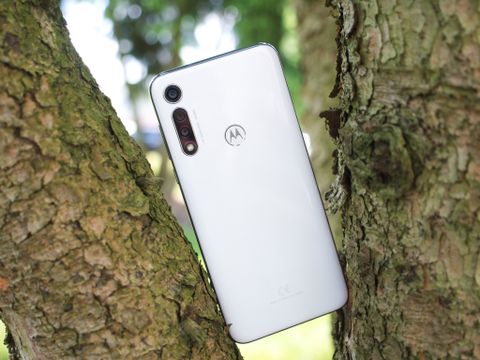Android Central Verdict
Bottom line: Hot off the heels of the excellent Moto G Power, the Moto G Fast aims to offer a similar experience while lowering the price even more. You need to put up with some substantial downgrades, such as a 720p display and just 3GB of RAM, but if you only have $200 to spend on your next phone and not a penny more, you could do far worse than what Motorola's offering here.
Pros
- +
Great build quality
- +
Long-lasting battery life
- +
Fast and reliable fingerprint sensor
- +
Compatible with all U.S. carriers
- +
Very low price
Cons
- -
720p display in 2020 is rough
- -
Not enough RAM or storage
- -
Terrible mono speaker
- -
Motorola's update policy
Why you can trust Android Central
Not too long ago, Motorola ushered in a duo of new Moto G phones for this year's lineup — the Moto G Stylus and Moto G Power. The phones bucked the expected "Moto G8" branding in favor of a simpler setup, with the G Stylus being the phone to get if you wanted a stylus while the G Power stood out for its excellent battery life.
Out of those two handsets, the Moto G Power quickly became the Moto G to get in 2020. It has a very capable processor, a good display, fun cameras, and just offers a great overall user experience for an attractive retail price of $250. Motorola pulled off a near-perfect mix of specs, features, and price with the phone, and it's since become one of my go-to recommendations for anyone shopping for a good and cheap Android device.
About two months later since the G Power and Stylus went on sale, Motorola's back at it again with a third entry for the 2020 Moto G Series. It's called the Moto G Fast, and it's essentially a repackaging of the Moto G Power but with lesser specs across the board. It's a good idea on paper, especially when you factor in the super-appealing $200 price tag.
Unfortunately, this becomes a perfect example of the saying, "If it ain't broke, don't fix it." Where the G Power makes smart compromises to achieve its affordable nature, the Moto G Fast goes a step too far and becomes a very mediocre device that just can't stand up to its older and wiser sibling.
Design and display
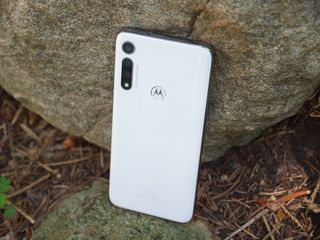
If you've seen the Moto G Power or the Moto G Stylus, you've seen the Moto G Fast. The phone has the exact same design as those other two devices, and while it's nothing that'll blow your mind, there's nothing offensive or bad about it either.
The G Fast is only available in a Pearl White color, and the back has a subtle striped pattern that helps give it some flair. I actually prefer this to the G Power's black paint job, which attracts a lot more fingerprints and smudges than the G Fast does. You also get a reflective plastic frame, which looks fine.
The Moto G Fast feels way better than you'd expect for a $200 phone.
There's no denying that the G Fast isn't the most striking or eye-catching phone on the market, but for $200, I didn't expect it to be. Besides, the generic aesthetic is made up for with really excellent build quality. Unlike other phones in this ultra-cheap price range, the Moto G Fast feels substantial in the hand and doesn't creak or rattle while using it. The buttons are clicky, the frame feels rock-solid, and the 189g weight gives it a very welcome sense of heft.
On the top frame of the Moto G Fast is its 3.5mm headphone jack, with the bottom frame housing its USB-C charging port. Although I personally moved on from wired audio gear years ago, I appreciate that Motorola keeps the headphone jack on pretty much all of its phones.
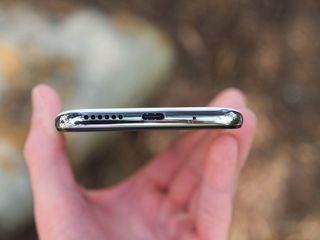
Next to the USB-C port is the G Fast's speaker grille, which is the first of many compromises that were made. Unlike the Moto G Power that utilizes its bottom-firing speaker and front-facing earpiece for stereo audio, the G Fast only plays audio from that bottom speaker. Not only does this mean you can very easily cover the speaker and muffle all of your audio when watching a video or playing a game, but the quality of it is also quite poor. I suppose this is a small gripe in the grand scheme of things, but compared to the G Power's stereo audio, it's a huge downgrade.
I only have one other design complaint, and that's the lack of an NFC chip for contactless Google Pay support. NFC used to be one of those things that we only expected with higher-tier flagships, but in 2020, that's no longer the case. If Nokia can churn out phones for $199 and $149 with NFC, there's no reason Motorola can't do the same. NFC should be on the Moto G Fast just as much as it should have been on the Moto G Power and Stylus, and until Motorola abandons this ridiculous notion that affordable phones don't need contactless payment support, I'll continue to complain about it.

With that little rant out of the way, let's move on to the 6.4-inch elephant in the room. The Moto G Fast's 6.4-inch LCD display is plenty large for content consumption, but it's not overly huge and still remains relatively easy to use with one hand. You also get minimal bezels and the hole-punch cutout for the selfie camera, which are staples for any 2020 handset.
A lot about this display works. It gets bright enough for most situations, there aren't any issues with viewing angles, and the colors are quite good for being a cheap LCD panel. Unfortunately, these pros are held back by the resolution. The Moto G Fast has an HD+ screen, which works out to 1560 x 720 and just 268 pixels-per-inch. Comparatively, the Moto G Power has a 2300 x 1080 resolution with a much higher 399 ppi.

You can pretty easily make out individual pixels and rough edges of app icons, not to mention that text is noticeably soft. When scrolling through Twitter or clearing out my inbox, this often makes it look like there's a film or smudge over the entire screen. It also means that YouTube, Netflix, and other video apps only support streaming up to 720p HD.
The display isn't unusable and might look fine to some folks, but knowing that Motorola can offer a much better 1080p panel on a phone for not much more money makes it difficult to overlook.
Performance and battery life
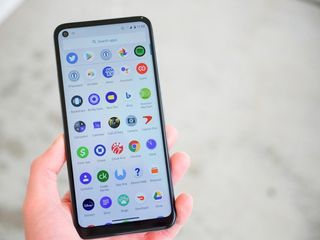
Powering the Moto G Fast is the exact same Qualcomm Snapdragon 665 processor found in the Moto G Power and G Stylus. However, while those two phones come equipped with 4GB of RAM, the G Fast steps down to 3GB.
| Category | Moto G Fast |
|---|---|
| Operating System | Android 10 |
| Display | 6.4-inch LCD 1560 x 720 268 ppi |
| Processor | Qualcomm Snapdragon 665 |
| Memory | 3GB RAM |
| Storage | 32GB |
| Expandable Storage | ✔️ |
| Security | Fingerprint sensor |
| Battery | 4,000 mAh |
| Water Resistance | Water-repellent coating |
| Carrier Compatibility | AT&T Sprint T-Mobile Verizon |
| Dimensions | 161.87 x 75.7 x 9.05mm |
| Weight | 189.4g |
App loading times, snapping a quick picture, and browsing through Chrome all feel good on the Moto G Fast. The 665 is a very capable chipset, and it offers almost as good of an experience here as it does on the G Fast's siblings. That said, there is cause for concern with the smaller RAM count.
Using the Moto G Fast right now, there are some instances where you feel the limitations of those 3GB. Apps in your multitasking menu need to shut down and reset fairly often, waiting an extra beat for the screen to rotate in YouTube is a common occurrence, and loading up a big game like Call of Duty: Mobile results in extra-slow loading times as the G Fast does everything it can to keep up.
There's nothing deal-breaking about this experience right now, but as time goes on and you continue to load your phone up with apps, games, and other files, things are only going to get worse. The difference between 3GB and 4GB of RAM doesn't sound like much on paper, but when it comes to Android phones, having that extra gig can be the difference of whether or not your handset is a laggy mess a year down the road.
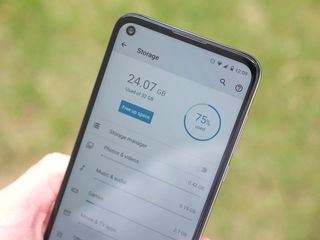
On the note of cutbacks, it's worth talking about the Moto G Fast's storage. You can only get the phone in a 32GB configuration, and out of the box, around 12.89GB are already taken up by the various system files — leaving you with a little over 19GB to work with. After downloading all of the regular apps I like to keep on my phone, I'm left with just 7.95GB remaining to store all of my pictures, videos, music downloads, etc. Motorola was smart to include support for a microSD card so you can quickly expand the storage should you need more, because it's something most users will likely need to invest in.
Rounding out this section of the review, I'm happy to report that battery life on the Moto G Fast is really, really good. You get a very generous 4,000 mAh unit, and paired with the G Fast's low display resolution, this is a phone you can more than likely use for two days at a time before needing to throw it on the charger.
Cameras

There are three cameras on the Moto G Fast, and they're identical to the ones you get on the Moto G Power — a 16MP primary camera, 8MP ultra-wide camera, and 2MP macro camera. Just like on the G Power, pictures are about what you'd expect for a phone that costs less than $300.





The 16MP sensor is perfectly adequate in settings where there's a lot of surrounding light, but in darkly-lit rooms or at night, it struggles quite a bit. Colors can also be a bit bland at times, but for simple uploads to Twitter or Instagram, it gets the job done.



Source: Joe Maring / Android Central
It's also a lot of fun to have the ultra-wide and macro cameras, even if they aren't the highest-quality sensors you can find. Pictures taken with the macro camera can sometimes look like a glorified watercolor painting, but it allows you to get up-close and personal with your subjects in a way that a regular camera doesn't.


Source: Joe Maring / Android Central
That same sentiment carries over to the ultra-wide camera. It has a tendency to showcase completely different colors and far less detail, but just having the option to go ultra-wide with a phone this cheap is nice to see.
Software
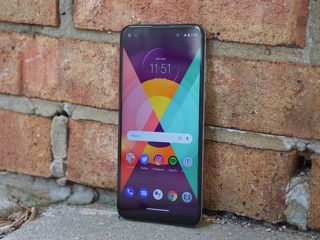
No matter what Motorola phone we're talking about, this is the part of the review that's always a strong point. Unlike manufacturers like Samsung and LG that are determined to customize and tweak virtually every aspect of the software experience, Motorola understands that stock/vanilla Android 10 is already pretty damn good at what it does. As such, Motorola gives its users a Pixel-esque user interface with a few smart additions here and there.
Motorola houses all of its customizations in the aptly-named Moto app, which is where you can enable and tweak longtime favorites such as Moto Display and Moto Actions. All these years later, chopping my phone to turn on the flashlight or twisting to open the camera app are still some of the best gestures we've ever gotten in the Android space.
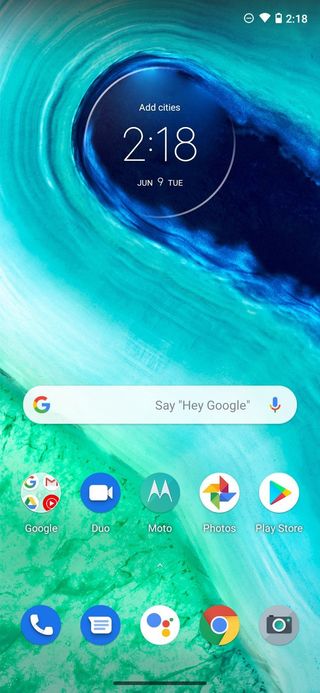
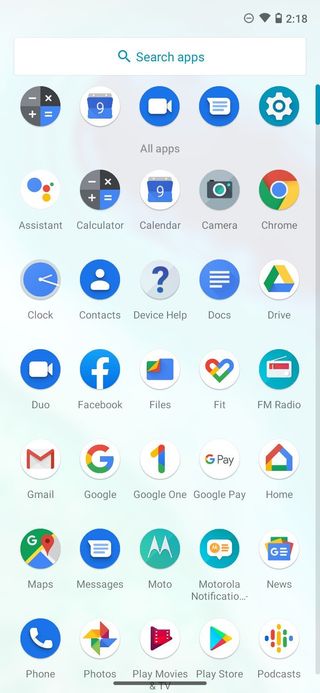
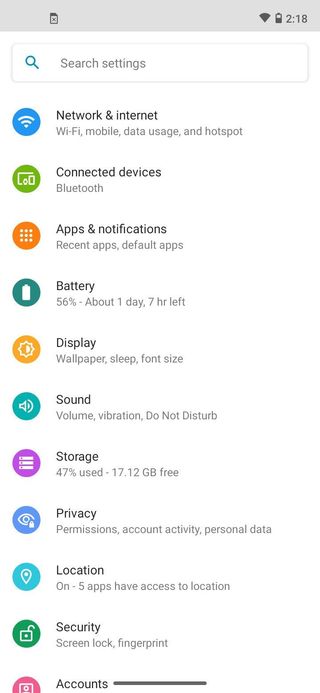
Source: Android Central
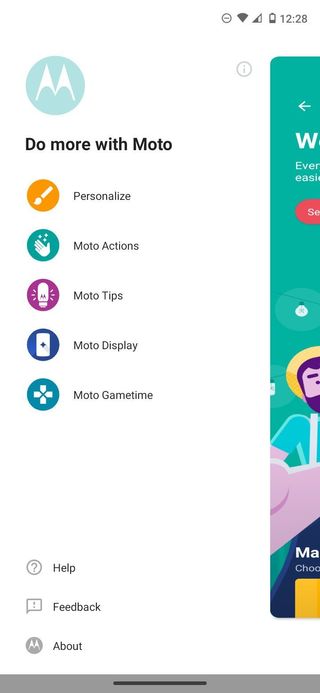
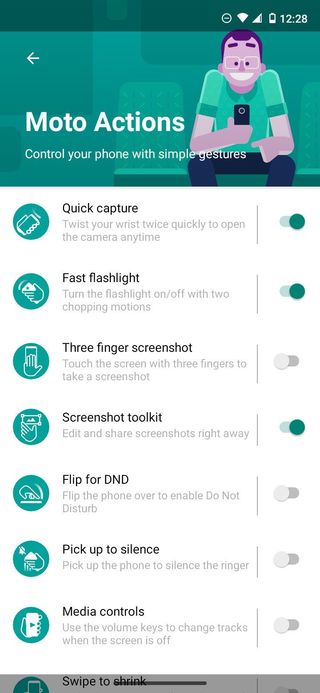
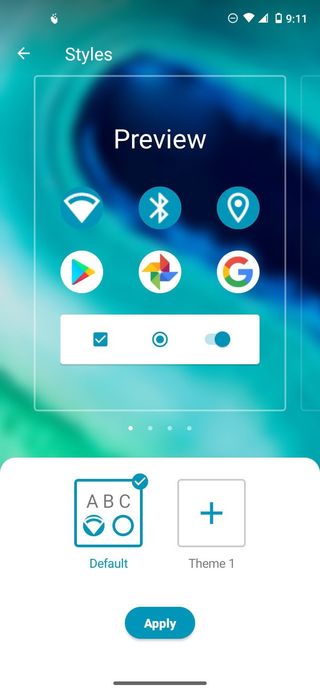
Source: Android Central
Also present here are the expanded customization tools Motorola introduced with the Edge+, allowing you to change the phone's font, accent color, and app icon shape. It's nearly identical to the theming suite found on Pixel phones, and that's not a bad thing by any means. There are a bunch of smaller tweaks, too, such as rolling screenshots and a Moto Gametime mode that can block calls and notifications while you're in the middle of an intense gaming session.
Moto's software is excellent, but the lack of updates remains a persistent problem.
All of this creates for a top-notch user experience right out of the box, but it comes with a sizeable caveat. As with all Moto G phones, Motorola only promises one OS update for the G Fast, which means it'll get Android 11 and nothing beyond that.
Motorola has continuously tried to justify this practice by saying it remains committed to app updates through the Play Store and regular security patches, but even that needs to be improved. I received one software update on my Moto G Fast unit during the course of my review, and it was to bump up the security patch to the March 2020 one — for a phone that was released in June 2020.
One could argue that Android updates aren't nearly as important these days as they were a few short years ago, but only promising your customers one major software update and being so far behind on security patches isn't a good practice.
Competition

The market for low-cost Android phones is rather competitive right now, and as hinted at quite a few times throughout this review, one of the biggest challenges facing the Moto G Fast is Motorola's own Moto G Power. It's a more expensive device with a retail price of $250, but you just get so much more for your money. Its display has a much sharper Full HD+ resolution, you get double the internal storage, an extra GB of RAM, and that massive 5,000 mAh battery which can allow for up to three days of use on a single charge.
All of those spec bumps come together to create for a noticeably better user experience, and if you have the budget to afford it, the Moto G Power is the smarter purchase in virtually every way.
Looking outside of Motorola, Nokia is a company that's been flooding the likes of Best Buy and Amazon with copious amounts of cheap Android handsets. The Nokia 5.3 is one of the latest offerings, and for the exact same price as the Moto G Fast, you get a more striking design, quad rear cameras, 4GB of RAM, 64GB of storage, and NFC for Google Pay. Not to mention Nokia is much better when it comes to software updates, promising two years of major OS updates and three years of monthly security patches.
The Moto G Fast has the upper-hand over the Nokia 5.3 with its broad carrier support, but if you rely on AT&T or T-Mobile for your cell service, it's hard to see why you should purchase it over what Nokia's offering.
Moto G Fast Should you buy it?
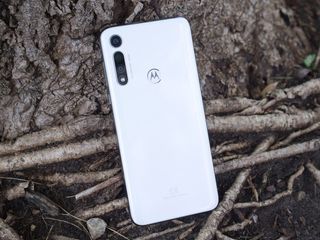
Who it's for
- If you can't spend more than $200 on your next smartphone
- If you want really good battery life
- If you value clean, Pixel-like software
- If you need a phone that still has a headphone jack
Who it isn't for
- If you can spend a bit more money for the $250 Moto G Power
- If you want a phone that'll get more than one software update
- If you need NFC for Google Pay
When I reviewed the Moto G Power back in April, it was a phone I could very easily recommend to just about anyone. Almost everything about that device works incredibly well, giving you a thoroughly enjoyable Android handset while still keeping costs very low. The lack of NFC and Motorola's lackluster update policy are just as annoying there as they are with the G Fast, but given how good the rest of the hardware is, it's well worth the $250 asking price.
The Moto G Fast has those same Motorola quirks, in addition to a plethora of hardware downgrades. Its 720p display is rough to use in 2020, the external speaker is one of the worst I've encountered in a while, and the lacking RAM and storage are annoyances today that'll evolve into major roadblocks the longer you own the phone.
3.5 out of 5
I know a lot of this review was spent comparing the G Fast to the G Power, but it's kind of impossible to talk about the Fast on its own. This feels like a very rushed device that Motorola pushed out just to have something with a $200 price tag, and while I'm all for more affordable smartphones, the G Power was already serving the budget Android market as a better overall device.
Then again, if you really can't spend a penny more than $200, the Moto G Fast gives you a comparable Android experience that'll serve you well in most regards. I still wouldn't recommend it over the G Power if you have the choice between the two, but especially given everything that's going on in the world where a lot of folks have especially tight budgets, the G Fast serves its purpose just fine.
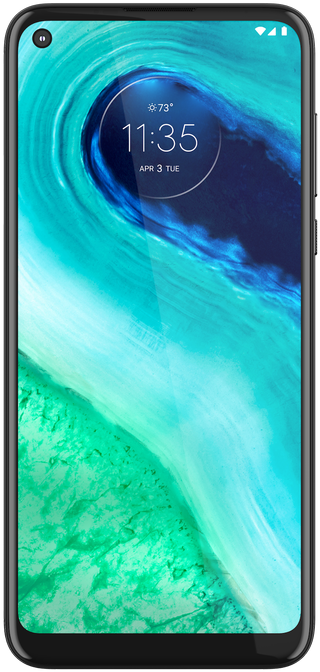
Motorola's $200 handset comes with some baggage
The Moto G Fast is an appealing smartphone if you have a very limited budget, and for the most part, it delivers a good user experience for being as cheap as it is. However, if you're able to stretch your dollars just a little bit more, Motorola's Moto G Power offers substantial upgrades that you'll be thankful to have — especially in the long run.
Joe Maring was a Senior Editor for Android Central between 2017 and 2021. You can reach him on Twitter at @JoeMaring1.
